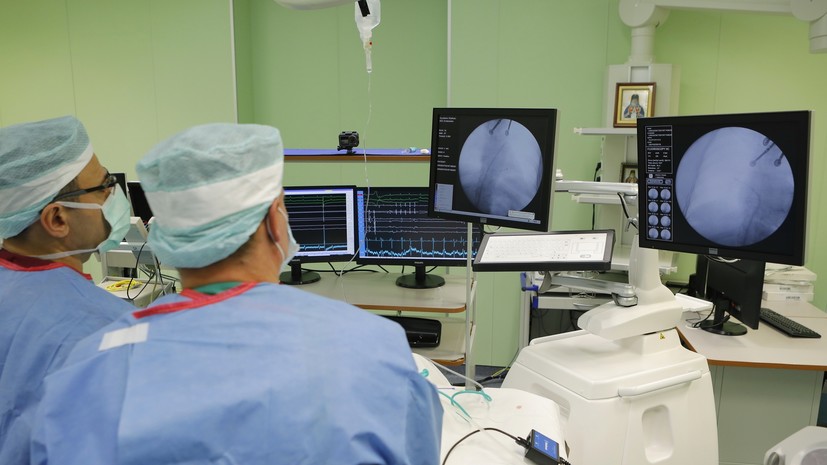MIPT scientists have developed and applied a new model for measuring electrical currents in human heart muscle cells. The authors of the work found out how this indicator depends on the voltage accumulated in cell membranes. The study may be in demand in medicine for diagnosing cardiac diseases associated with impaired cardiac tissue conduction, such as arrhythmia. The press service of MIPT reported this to RT. The results of the study were published in The Journal of Physiology.
Nerve conduction in the body is ensured by weak electric currents, which are flows of ions - atoms with an electrical charge. For example, excitation occurs due to the transfer of sodium ions into the cell from the intercellular space.
Disturbances in these processes in cardiac muscle cells (cardiomyocytes) can affect the heart rhythm and ultimately provoke arrhythmia and thrombosis. Therefore, the study of these processes is an important task for medicine. It is complicated by the fact that at a real human body temperature of 37 ºС, the current has a very high amplitude and its indicators change very quickly so that they can be detected. In addition, the methods used today do not take into account that cell membranes themselves, like capacitors, accumulate electrical potential.
Cardiac muscle cells, cardiomyocytes (graphic illustration)
Gettyimages.ru
© KATERYNA KON / SCIENCE PHOTO LIBRARY
The study authors developed a computer model that solves these problems. Scientists mathematically optimized the calculation parameters and took into account that the electrical potential of the cell membrane, when interacting with a flow of ions, does not change instantly, but over time. The depolarization of the cell membrane was also taken into account (a decrease in the potential difference between the negatively charged cytoplasm and the extracellular fluid. -
RT
) above the command potential - the measuring signal supplied to the cell. The new model also helped describe the propagation of current when the concentration of potassium ions in cardiomyocytes is higher than normal. Before this, all other classical mathematical models did not consider such an indicator at all, the researchers note.
The data processing technique also made it possible to measure the electric current in living cardiomyocyte cells at a temperature of 37 ºC. The cell culture for the experiments was obtained from stem cells.
The technique will facilitate the work of studying the safety of drugs, and will also help in creating individual approaches to the diagnosis and treatment of specific patients.
“We hope that the model we have obtained will simplify both fundamental research of cardiac tissue and applied research, for example, predictive modeling of the action of antiarrhythmics,” said co-author of the work Mikhail Slotvitsky, a researcher at the Laboratory of Experimental and Cellular Medicine at MIPT, in a conversation with RT.

